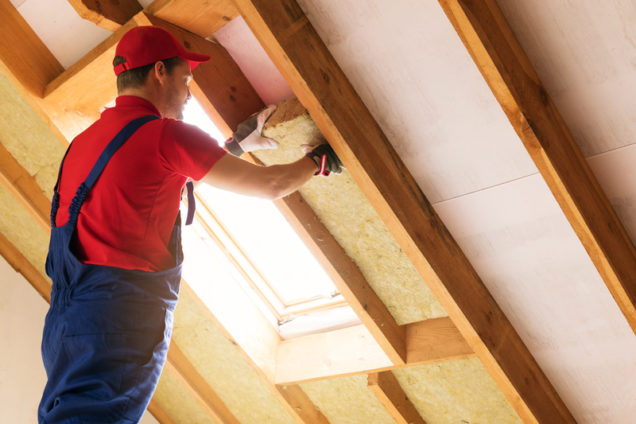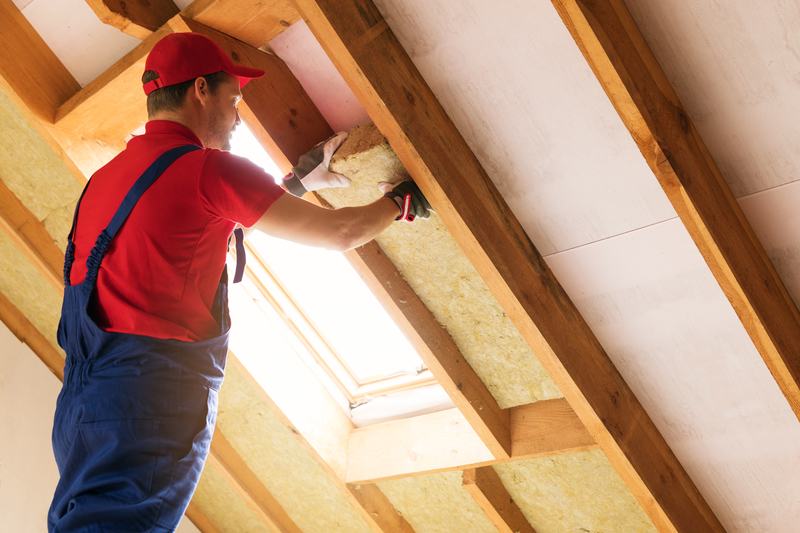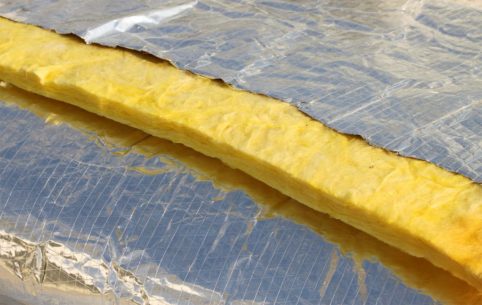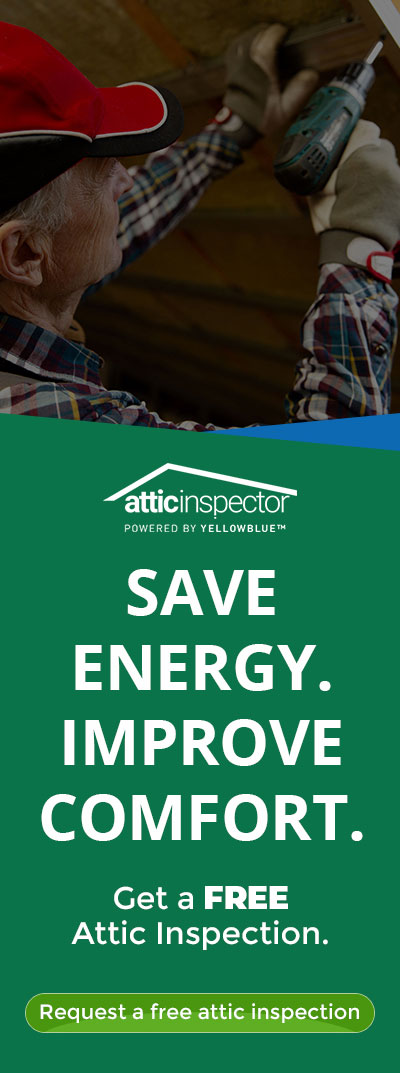Whether it’s the dead of winter or the middle of the summer, insulation is key for maintaining whole-home health.
While there is a multitude of places for insulation — your walls, your ducts, your floors — one of the most important places to maintain proper insulation is the attic. That’s why knowing how to choose attic insulation is so important.
“Attic insulation” is a big topic with a lot of parts to it, and that’s where we come in. We’re here to make one of the most important concepts within the home as simple as possible. Every homeowner should be empowered to make confident, educated decisions to create a better indoor environment.
Follow this guideline for choosing attic insulation and you will be closer to more comfort, better energy-efficiency, and lower energy bills.
The Basics of Attic Insulation
You can’t improve your attic insulation if you don’t know your starting point.
Before taking action, homeowners should make sure they can answer some basic questions and determine a baseline to improve from. Questions you should consider include:
- Where is your house?
- What climate does your house experience?
- Is your house old or new model?
- How effective is your current attic insulation?
- Do you have the appropriate insulation?
We’ll walk you through finding the answers to these questions.
What Is The Best Insulation for Your Attic?
There are multiple ways to get a sense of what you will need to do before you even step foot in your attic.
The first thing you can do is consider the age of your home.
Is it an older model or was it recently built? Older home models tend to have less insulation than newer homes since the importance of energy-efficiency is increasingly becoming important to home-builders. If your home is an older model, that could be an easy sign that you’ll need to add more insulation. If you have a newer model, you may be better off than others.
Another thing you can easily consider is where the house is physically situated. Is there cold weather year-round where you live? Do you experience every seasonal climate? The answers to these questions can help you identify the R-Value that your attic insulation will need to have.
Insulation R-Value
R-Value is a critically important concept for insulation, so getting familiar with it early can save you energy and money down the line.
“R-Value” measures how well an insulative material retains heat and halts heat transfer. The higher the material’s R-Value, the better it is at controlling heat. Typically, the thicker the material, the higher the R-Value.
Though it is important to note, a high R-Value in your attic is not always necessary (or ideal). Your ideal R-Value depends on where you live and what the typical climate is like in your part of the country.
Taking a look at the map here can give you a good sense of what R-Values to aim for in your area of the country.
Best Ways to Insulate Your Attic: Picking the Right Material
After you address these preliminary aspects of your attic, it’s time to take the appropriate steps towards improving it.
Let’s take a look at the most effective materials for attic insulation.
An easy place to start the improvement of your attic insulation is your attic access door. Implementing an attic access cover like an Attic Gator is a fast way to improve both the sealing and the insulation of your attic. Since air between the attic and your living area easily leaks through the attic access, an attic access cover can eliminate this common problem.
After you’ve sealed your attic access, it’s time to look at what insulation materials you need for the rest of your attic.
Some of the most common types of attic insulation materials include loose-fill, blankets/rolls, and reflective insulation.
Insulation Blankets and Rolls
When most people hear “insulation”, they typically think of insulation blankets. Typically coming in the form of fiberglass, insulation blankets are a simple way to bump up your attic’s R-Value.
Blankets can be placed between studs and beams, are great for attic walls, and are often used in other parts of the home like living-area walls and floors. Homeowners can find insulation blankets/rolls made of fiberglass, wool, plastic, or natural fibers. Moreover, this material can be found in many home improvement stores.
Blankets are made to fit typical framing sizes, but they can also be easily cut to fit atypically sized spots. Homeowners should use the chart on this page (also linked above) to match the R-Value and thickness of fiberglass to the area in which they live.
Loose-Fill Attic Insulation
Loose-fill insulation is another typical material used in attics. Like blankets, loose-fill often comes in fiberglass form. Homeowners can find cellulose or wool loose-fill insulation as well. In each form, loose-fill consists of small particles that are blown into or poured into hard-to-reach attic crevices.
Loose-fill is a good alternative to blankets when there are irregularly shaped areas or finished areas in the attic. This option is environmentally friendly because it is often made partially from recycled materials. However, homeowners should also be aware of the fact that loose-fill can gather mold when there is too much moisture in the attic.
Reflective Insulation
Reflective insulation is another widely-used material throughout the country. Unlike loose-fill, insulation blankets, and other forms of insulation which control conductive and convective heat, reflective insulation reflects radiant heat (similar to radiant barriers) from the sun.
Rather than absorbing the heat as the attic would otherwise do, an attic with reflective insulation both reflects the radiant heat outward and reduces heat transfer. It resists the radiant heat from the sun and traps it to increase thermal efficiency in the attic. Some reflective materials even have multiple layers, further lessening the potential for conductive heat, and improving temperature control for the rest of the house below.
Reflective insulation can be placed either on the floor of the attic or on rafters. Reflective insulation materials differ depending on the attic’s specific needs as well as the homeowner’s desired results.
Other Insulation Materials
Other insulation materials include concrete block insulation, spray foam, and structural insulated panels. You can learn more about these types of insulation materials here.
Taking Action on Your Attic Insulation
Now that you know what to look for when assessing your attic, it’s time to take action and improve your attic’s insulation. The steps that we’ve laid out in this article can be summarized into four main steps:
- Assess the current insulation and where your house is located (start with a baseline)
- Determine what “R-Value” you need, as determined by your location
- Start simple — look to seal your attic access and identify which insulation materials you will need
- Contact a professional so you can get proper insulation installation
Attic Insulation Installation
While a do-it-yourself approach can be taken when improving your attic insulation, we always recommend getting your attic inspected by professionals. The experts have all the necessary tools for improving your insulation as efficiently as possible.
Contact an independent authorized yellowblue™ dealer today to discuss attic-assessments and what you will need to improve your attic insulation.






